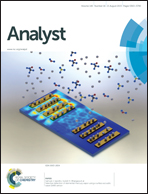Fluorescent and colorimetric sensors for environmental mercury detection
Abstract
Exposure to mercury ions can damage the human brain, the nervous system, the endocrine system, and other biological systems. Much effort has therefore been made to develop real-time monitoring of mercury variations, and many mercury-ion sensors have been reported recently. In this review, mercury-ion sensors reported since 2008 are described and discussed. The sensors are classified as molecular, nanomaterial based, and others. Molecular sensors are based on chemical and hydrogen bond formation, and the other types are based on changes in the materials used.


 Please wait while we load your content...
Please wait while we load your content...